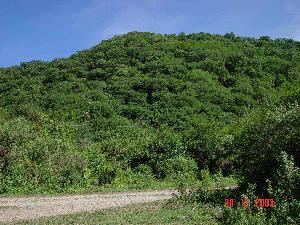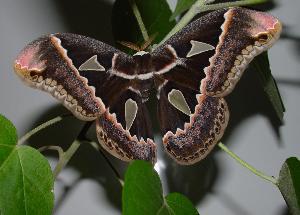Adriana Ines Zapata
The main objective of this study is to make an inventory of the Saturniids and Sphingids in the area, make a database for collections and images, and prepare illustrated guides of these taxonomic groups.

Panoramic view of “Serrano” forest.
The invertebrates long have been forgotten at the time of making decisions with respect to the conservation. Studies such as those of Holloway’s (1985) have shown that it is possible, and in addition advisable, to use the invertebrates (particularly moths) to monitor environmental quality, for which understanding the conditions normally prevailing is a prerequisite.

Rothschildia maurus, the largest Saturniidae that we have collected in the Serrano Forest.
The main goal of my work is to know richness, distribution and conservation status of Saturniids and Sphingids (in this first stage of the “Serrano” forest), enrich the lists with biological information (like flight behaviour), make reference collections that allow comparative studies between regions and through the time, make an image bank of the species present in the areas, as well as record its relative abundance, contribute to the formation of skilled people capable to work with these groups of insects and offer the community (scientist and nonscientist) guides who allow for recognition of local species.
The major activities planned within the project are:
1) during summer-autumn monthly collecting Saturnidae and Sphingidae during 2 nights around the new moon, in different spots in the “Serrano” forest, inside and outside the “La Quebrada” Hydric Reserve. Only up to 5 individuals by species and sex will be sacrificed. The rest of the collected material will be photographed using a digital camera, retained in entomological cages and released at the end. With the images, a relational database will be constructed. In the laboratory collected material will be labelled and prepared. Later on, the specimens will be sorted out and stored in entomological drawers in the reference collection.
2) during winter-spring we will make the identification of the material in the laboratory with specialized literature, analysis of data, preparation and edition of the illustrated guide and its presentation in local schools.